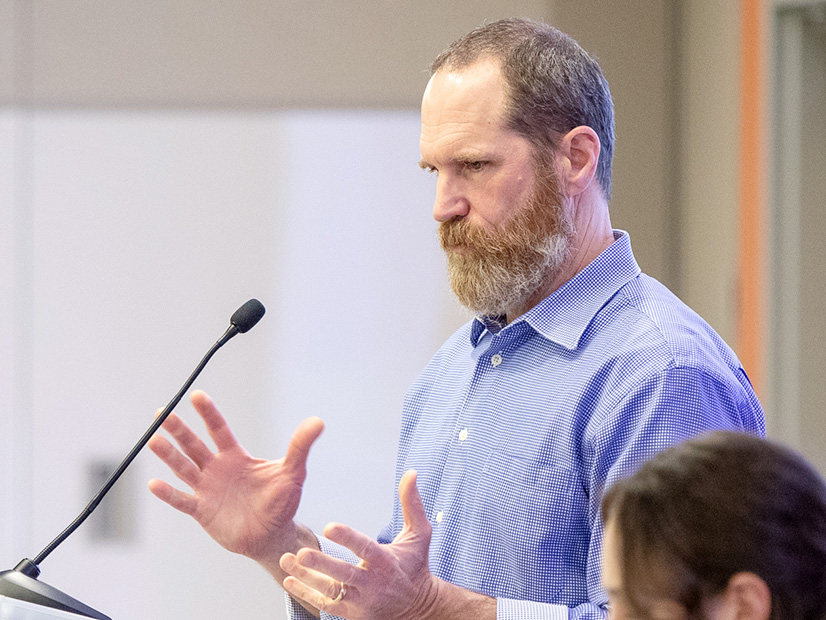RTOs Submit Comments on EPA Rules
PJM reviewed comments it submitted jointly with other RTOs on EPA’s proposed regulations on greenhouse gas emissions from power plants to the Operating Committee during its Jan. 11 meeting.
The comments also were signed by MISO, ERCOT and SPP and largely focused on allowing them to maintain their ability to ensure resource adequacy and call on specific units during emergency scenarios.
PJM’s Gary Helm said the grid operators warned that the timeline for requiring carbon capture or hydrogen fuel blending for coal and gas resources could quicken the pace of generator deactivations. They recommended rethinking the requirements for new combustion turbine units, as EPA’s proposed rule would require that new CTs include either carbon capture or hydrogen blending when they are brought online. They argued that the infrastructure to support either of those capabilities does not yet exist. Rather than looking at what technologies exist, they urged EPA to also consider what infrastructure is available to make that technology accessible to generators. (See FERC Dives into Reliability Implications of EPA’s Power Plant Rule.)
The proposal “is pretty far reaching, and because of the stringency of the requirements, we’re looking at seeing retirements … as well as limitation on the operation of gas-fired generation,” Helm said.
The grid operators also provided recommendations for creating a “safety valve” to ensure that resource adequacy is not compromised by the rule, including identifying units that may be needed to maintain reliability; a “regional bank” of reliability credits that could be used to operate during emergencies; guidance for states to create resource adequacy and reliability plans; and direction on the agency’s thinking on the remaining useful life of assets.
System Operating Metrics
PJM saw two days outside its 3% target load forecast error during December, according to the system operations report delivered by Stephanie Schwarz, manager of markets coordination.
The RTO underforecast load by just over 4% on Dec. 3, while the forecast for Dec. 24 was about 3.5% above actual conditions. December also saw a shortage case approved Dec. 1, which Schwarz attributed to load, interchange and intermittent generation being affected by shifting weather patterns.
Two spin responses were implemented Dec. 14 and 19 lasting 12 minutes and 15 seconds and 6.5 minutes, respectively. The Dec. 14 event had an assignment of 2,712 MW and a response rate of 1,436 MW, leading to 1,276 MW of penalties being assessed. The Dec. 19 event had a full response from the 2,687 MW it deployed.
Other Committee Business
PJM Director of Enterprise Information Security Jim Gluck urged market participants to remain vigilant for possible social engineering and phishing intrusion attempts aimed at gaining access to computer systems and locking users out for a ransom. He said there have been a growing number of attacks that include individualized research into companies in an attempt to make messages more authentic, including impersonating employees.
The RTO also presented a quick-fix proposal to revise Manual 3A to change language pertaining to the Bulk Electric System to conform to NERC-approved definitions.



